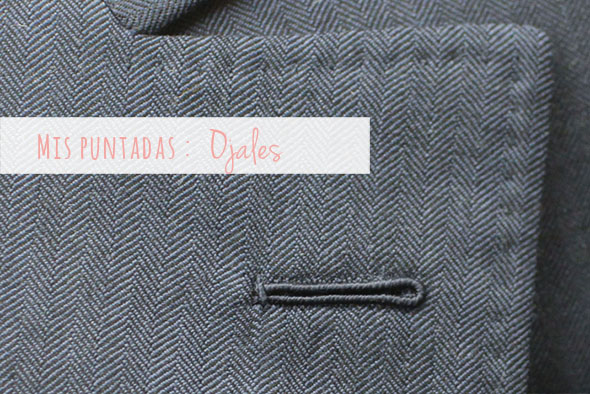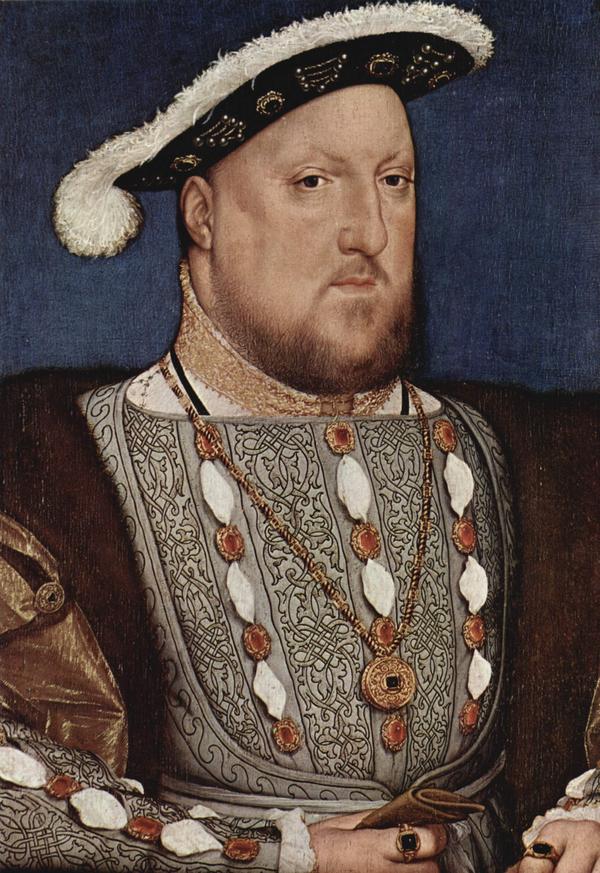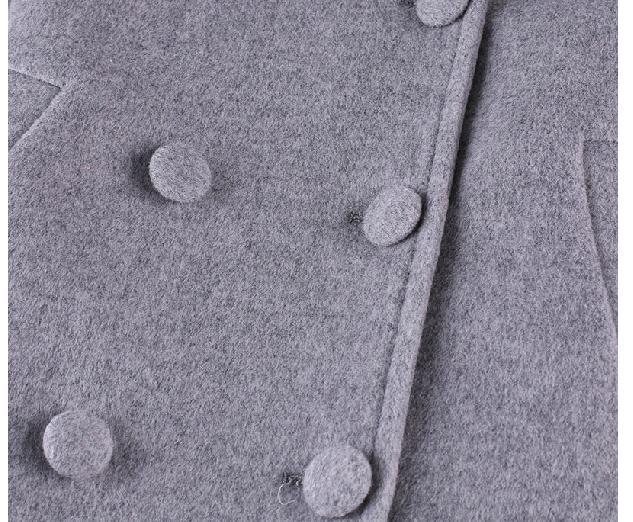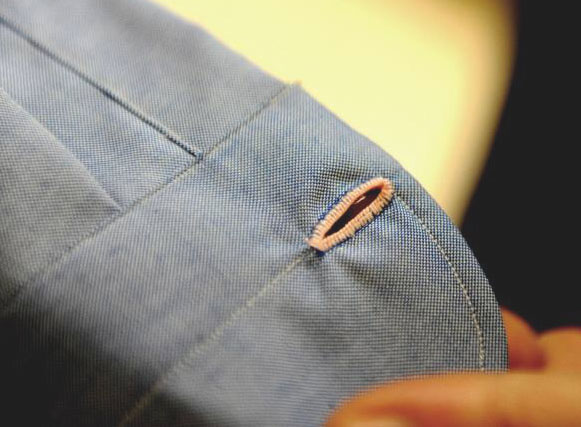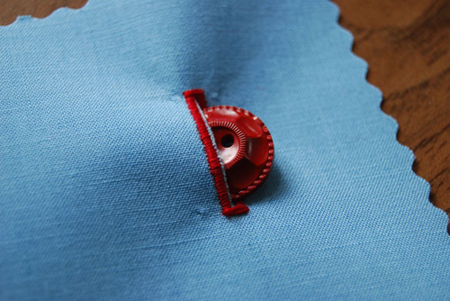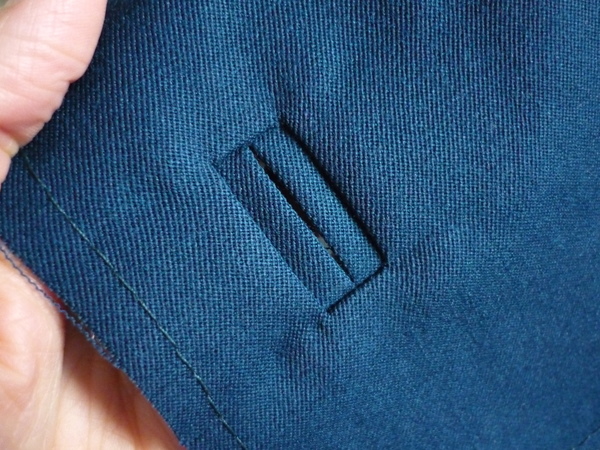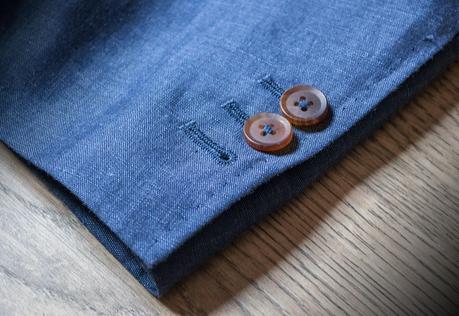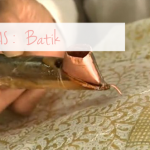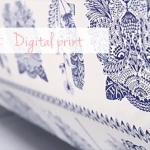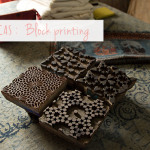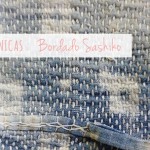Un ojal es el orificio que llevan las prendas textiles como parte de un cierre junto con los botones. Estas hendiduras permiten que el botón pase fácilmente a través de ellas cerrando cualquier abertura de la prenda, ya sea en camisas, chaquetas, faldas o pantalones.
Para que esas hendiduras no se rajen con el uso, van rematadas con tejido y más usualmente con hilo. El hilo utilizado normalmente es más grueso que el del resto de la prenda para que cubra más y no solo remate los extremos, sino también los bordes y evite deshilachados.
An English translation below if you click ” Sigue leyendo”
La práctica de abotonar una prenda se originó en la Europa occidental del siglo XIII. Las ropas holgadas empezaban a verse sustituidas por otras más ajustadas. Solamente un cinturón no conseguía cerrar y ajustar las prendas y con alfileres se necesitaban muchos y frecuentemente se caían y perdían, además de dañar los tejidos delicados, con lo que se empezó a usar el cierre botón-ojal.
Con el tiempo, los cierres se volvieron muy cuidados y los botones casi joyas, apareciendo aberturas en las prendas más como un método de lucimiento que de practicidad. En pinturas de los siglos XIV y XV podemos ver esa moda de los botones, alcanzando su apogeo en el XVI, cuando los botones podían ser de oro y plata, y adornados con piedras preciosas, con fines meramente decorativos, como se había hecho antes de la creación del ojal.
Tradicionalmente, los ojales de la ropa de los hombres están en el lado izquierdo , y los ojales de la ropa de las mujeres están a la derecha. Estudiando retratos y grabados de prendas con botones, los historiadores de la moda hacen remontar esta práctica al siglo XV. A las camareras que vestían a las ricas mujeres que podían costearse estos caros botones, en su mayoría diestras, les resultaba más fácil cerrar los ojales de sus señoras cuando podían sujetar el botón con su mano derecha, con lo que las modistas los cambiaron poco a poco de lugar.
Hay varios tipos de ojales:
- Los ojales a mano, rematados a todo su alrededor con lo que se llama puntada de ojal, un puntada tipo lazada que remata los bordes de la hendidura una vez hecha.
- Los ojales a máquina, cosiendo dos lineas paralelas con puntada zig-zag, acabados los extremos con un zig-zag más largo. Cuando el ojal se hace a maquina, se abre la hendidura entre los lados del ojal después de completar la costura.
- El ojal sastre es el que los lados de la hendidura se rematan con estrechas piezas de tejido.
- Los ojales ojo de la cerradura es un caso especial a máquina y que se caracteriza por un orificio redondo en el extremo de la ranura. Es muy usado en tejidos gruesos o prendas de sastrería, donde el ojo de la cerradura en el extremo del ojal acomoda el vástago del botón y evita arrugas en el tejido al estar cerrada la prenda.
¿Qué tipo de ojal te gusta más?
A buttonhole is a hole in the fabric of garments as part of a closure with buttons. Those holes allow buttons to pass through closing any opening of the garment, either shirts, jackets, skirts or trousers.
The raw edges of a buttonhole are usually finished with stitching. This may be done either by hand or by a sewing machine. The thread used is usually thicker than the one used in the rest of the garment so that it is not only covering and finish the ends, but also the edges and also to prevent fraying.
The practice of buttoning a garment originated in Western Europe to the thirteenth century. Loose clothes began to be replaced by others more fitted. Only a belt couldn’t close and adjust the clothes. Many pins were needed and often fell and lost, a part the damaging cause in the delicate tissues, so they began using the closing button-buttonhole.
Over time, the closures and its buttons became almost jewelry, appearing more openings in the garments as a ornament. In the paintings of the fourteenth and fifteenth centuries we can see that fashion buttons, and it reaches its peak in the sixteenth century, when the buttons could be gold and silver and adorned with precious stones, for purely decorative purposes.
Traditionally, eyelets clothes men are on the left side, and the buttonholes of women’s clothing are right. Studying portraits and engravings of garments with buttons, fashion historians trace this practice make the fifteenth century. A waitresses dressed rich women who could afford these expensive buttons, mostly right hands, they found it easier to close the buttonholes of their mistresses when they could hold the button with your right hand, so dressmaker’s adopt the change.
There are several types of buttonholes :
- Hand stitched buttonholes, where the cut edges are finished with thread in very closely spaced stitches by buttonhole stitches with a gimp cord at the edges to act as a reinforcement.
- Machine buttonholes, sewing two parallel lines with zigzag stitch, finish the ends with a broader zigzag. When the buttonhole is made by machine, the slit between the sides of the buttonhole is opened after the stitching is completed.
- Bound buttonhole is where the sides of the slit are encased by pieces of fabric or trim instead of stitches.
- Keyhole buttonhole is a special case of machine buttonhole machine characterized by a round hole in the end of the slit. It is widely used in heavy fabrics or tailored garments where keyhole at the end of the buttonhole closest to the gap will accommodate the button’s shank without distorting the fabric.
What kind of buttonhole do you prefer?
Imagenes: america.pink, craftandmama, sewaholic

